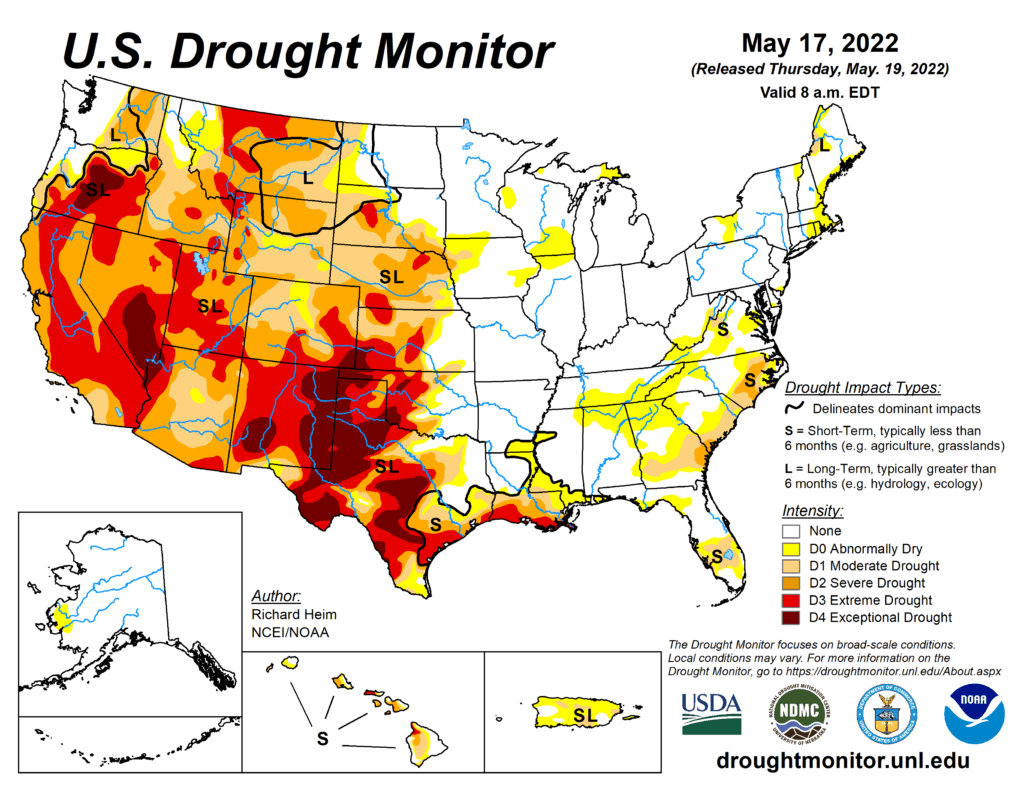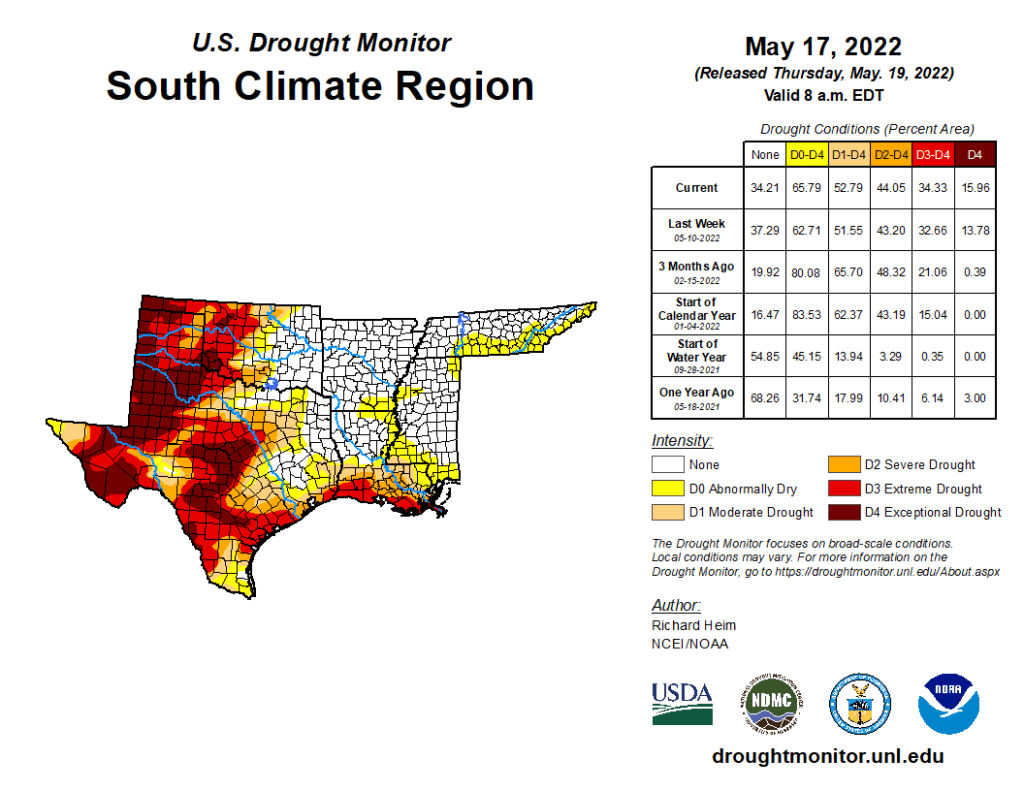
This Week’s Drought Summary
In the upper levels of the atmosphere, a strong ridge of high pressure dominated the contiguous U.S. (CONUS), from the southern Plains to Northeast, at the beginning of this U.S. Drought Monitor (USDM) week, while an upper-level trough dominated the West. The trough moved east as the week progressed, dragging a surface low pressure system and cold fronts across the northern Plains to Great Lakes, while another upper-level low moved over the Southeast and weakened. Weekly temperatures averaged much warmer than normal beneath the ridge and cooler than normal in the West beneath the trough. The fronts, lows, and upper-level troughs brought above-normal precipitation to parts of the Pacific Northwest, northern Plains to western Great Lakes, and spotty areas in the South, New England, and along the Atlantic Coast. The week was drier than normal across the rest of the CONUS. The continued lack of precipitation further dried soils, lowered stream levels, and stressed crops and other vegetation, while the excessively warm temperatures increased evapotranspiration and added to the stress. Drought or abnormal dryness contracted where precipitation was above normal, especially in the Northwest, northern Plains, and Mid-Atlantic. Drought or abnormal dryness expanded or intensified where it continued dry, especially in the Southwest, southern to central Plains, Southeast, and parts of the Northeast.

South
All of the states in the South region had areas of rain with amounts of half an inch or more, but large areas also received no rain. Temperatures were persistently hot throughout the week, increasing evapotranspiration, further drying soils, and stressing crops and vegetation. On May 15, Abilene, Texas recorded 8 days in May with 100-degree-F temperatures. This set a new record for the highest number of days in May with 100 degree temperatures. The previous highest number of days for Abilene was 7 days, set in 2000 and in 1927. Recent dryness is compounding long-term dryness, especially in western parts of the region. By some measures, Culberson County in Texas had the driest September-April on record and second driest December-April, and that is not counting the dryness so far in May. Corpus Christi, Texas recorded the third driest February-May to date out of 136 years of record. According to USDA statistics, 86% of the topsoil moisture in Texas was short or very short, and 53% was short or very short in Oklahoma and Louisiana; 74% of the pasture and rangeland was in poor or very poor condition in Texas; and 81% of the winter wheat in Texas and 52% in Oklahoma was in poor or very poor condition. Drought or abnormal dryness contracted in the few areas in Texas and Oklahoma where more than an inch of rain fell on Dx areas. But abnormal dryness and moderate to exceptional drought expanded in many more areas of Texas. Abnormal dryness and moderate to extreme drought expanded in southwest Louisiana, and abnormal dryness grew in Tennessee.
